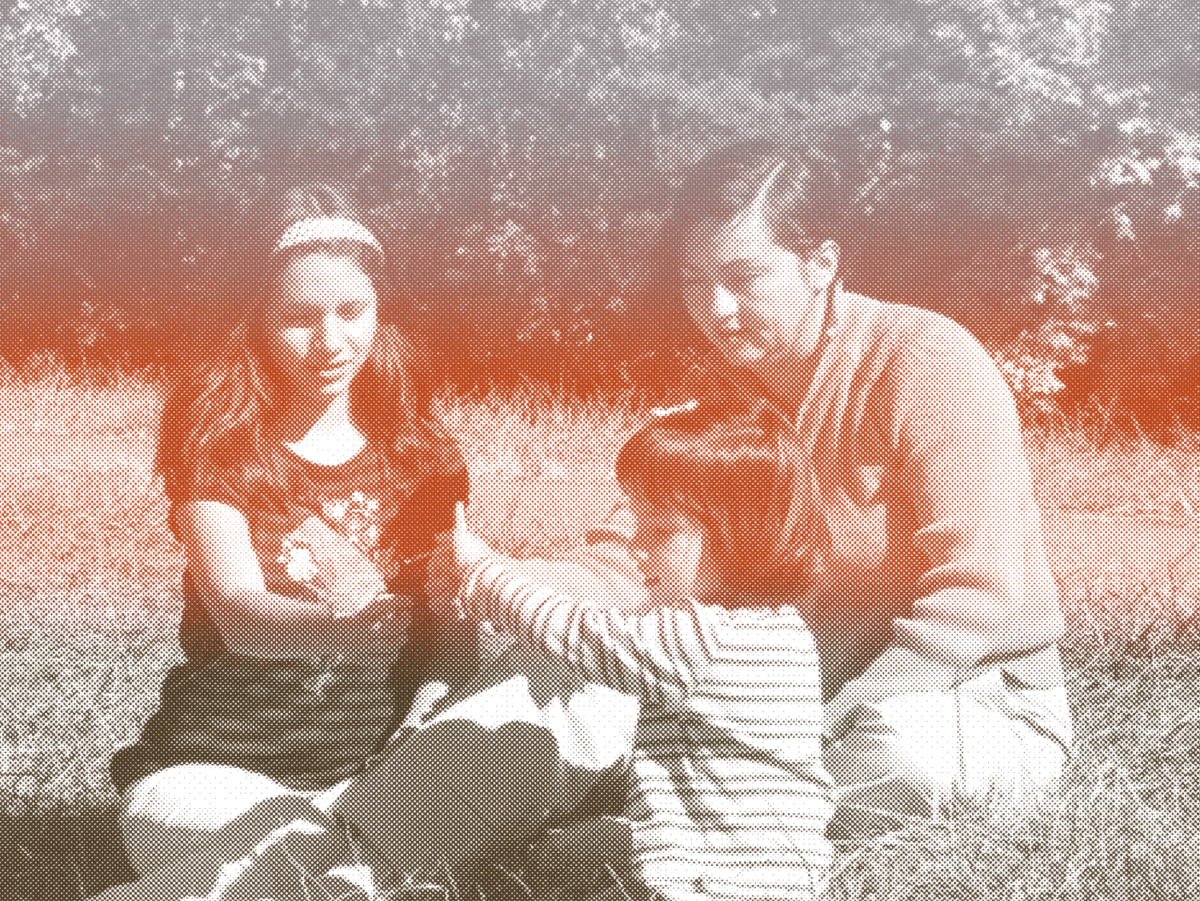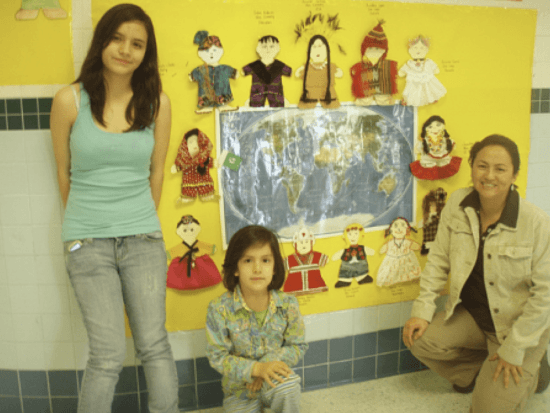Caretaker Faces Deportation Over Dubious ‘Shaken Baby’ Conviction
After being released from prison, her only chance is a pardon from the governor.

Former caretaker Trudy Munoz and her family should have been celebrating their reunion after she was released from prison Monday. But she is not free. Instead, her lawyers told The Appeal, Munoz was herded onto an ICE van while her family watched through a fence. No one was allowed to speak with her. Now, Munoz, 53, faces near-certain deportation based on the dubious science that put her in prison nearly a decade ago.
On April 20, 2009, Munoz was running a licensed home daycare facility in Fairfax, Virginia. She had never had any problems or complaints, and she was praised for her kind nature and her ability to be patient with difficult children. That spring day, 4-month-old Noah Whitmer was one of five children under her care. Everyone agreed that Noah had been especially cranky and irritable over the previous week, and Munoz had trouble getting him to take a bottle. By the afternoon, Munoz was trying to comfort Noah when he suddenly went stiff and began to vomit. She performed CPR and called the paramedics. Still breathing, Noah lapsed into a coma.
At the hospital, a CT scan revealed a possible subdural hematoma—bleeding between the brain and the skull—an injury often associated with child abuse because it happens when the brain strikes the skull as the result of impact. Investigators looked at Munoz as a suspect because she was the last person to be alone with Noah. Munoz was interviewed multiple times and showed investigators how she had jiggled the baby when he was fussy in a rocking motion —not the whiplash associated with child abuse. But, in part because of a language barrier, Noah’s physicians believed that Munoz had confessed. Munoz and another witness say she never did. (The interview in question wasn’t recorded, and there was a confusion with translation.) As a result, the care providers proceeded with the assumption that this was an abuse case with the typical narrative: a care provider got annoyed with a fussy baby and shook it too hard.
Munoz was convicted of felony child abuse and sent to prison. Her case has gone in front of several appellate courts, but they rejected her appeals. Noah remains permanently injured and suffers from seizures.
Munoz’s oldest daughter, Renata, was 14 when her mother was arrested. “It was very much a defining moment in my life. … That was the end of my childhood. I had to grow up,” she said to The Appeal over the phone from Virginia where she attends George Mason University and studies environmental science. She explained the struggle of keeping her family intact, which included her father and her then-5-year-old sister, even as she and her sister went to live in Peru so their father could work to support them and her mother. “We’ve been used to seeing my mom two times a month, sometimes, and talking to her sometimes. For the first seven years, she didn’t even have email, so it was me writing words on paper, and then it’s a month to get a response. It really felt like she was gone a long time.”
Now that her prison sentence is over, Munoz has been released into ICE custody and is being processed in Richmond. According to her lawyers, no one—not even Munoz—knows where she will be detained after she is processed. Her only hope is a pardon from Virginia Governor Ralph Northam, who has said publicly that he isn’t familiar with the case even though the paperwork was filed two years ago.

Even as public attention is intently focused on children taken from their parents and placed in custody while their parents are deported, the separation of children and parents deported for a supposed criminal record has received less scrutiny. Munoz is another person about to be torn further from her family because of a felony conviction. Immigrants with certain criminal convictions, even if they hold valid green cards, have been targeted by ICE operations long before the current administration. They are the felons in President Barack Obama’s “felons not families,” statement, a 2014 policy shift in which the Department of Homeland Security prioritized immigrants with felony convictions for deportation.
Once Munoz is forced to leave the U.S., the law could prohibit her from returning for life. Renata felt that this was the hardest on her younger sister: “She was only 5 years old. I feel like I’ve become an adult and can handle it. If she is deported, I can handle it. I worry about my little sister; it’s become her whole life. Her mom was arrested at 5. She hasn’t seen her.”
Virginia’s pardon and parole board promised to review her case after her pardon petition was filed, but there has been no movement. Governor Northam hasn’t made any indication that he will examine the petition. This is despite the fact that Munoz’s conviction relies on a principle increasingly under question by the medical community.
Cases like Munoz’s that rely on the diagnosis of “shaken baby syndrome” have come under scrutiny in recent years. The concept behind shaken baby syndrome was simple. In 1971, Dr. Norman Guthkelch, a pediatric neurosurgeon, asserted that young children and babies were being shaken to death, violently tossed until they died. There were certain physical symptoms associated with this cause of death, including bleeding in the brain, brain swelling, and retinal hemorrhaging. Known as the triad of symptoms, they became talismanic for a kind of child abuse too horrible for most people to envision.
The nightmare of shaken babies became a media fixation, with special attention devoted to the parenting of low-income families and women who leave their children with caregivers. One of the earliest criminal cases to rely on shaken baby syndrome was the murder trial of 19-year-old Louise Woodward, a British au pair. The media and public commentators made much of the fact that the baby’s mother had hired a caregiver in order to work outside the home. (The mother was an ophthalmologist who worked three days a week.) In New York State and other places, hospitals are required to offer a lecture to new parents about shaken baby syndrome. Governor Northam himself said that he wanted to make sure the public knew about the dangers of shaken baby syndrome. And even though the American Academy of Pediatrics now refers to the triad of symptoms as “Abusive Head Trauma,” the group still warns about the persistent dangers of child abuse and injury.
But, in recent years, pediatricians and lawyers have realized that much of the “science” behind shaken baby syndrome wasn’t science at all. In reality, the diagnosis was often a product of uncertainty when there was no clear medical explanation—or one that physicians hadn’t considered—and prosecutors were faced with a dead baby. Deborah Tuerkheimer, a law professor at Northwestern University, describes the need for justice when a baby is injured in her book Flawed Convictions: “Shaken Baby Syndrome” and the Inertia of Injustice: People can’t tolerate ignoring “the sudden, seeming inexplicable collapse of an infant.”
Whereas historically, prosecutors charged the last person to see the child with shaken baby murder, today experts acknowledge that it’s not that clear-cut. Studies show that it can take hours or even days for symptoms to appear. Even Dr. Guthkelch acknowledged that shaken baby syndrome was only his theory and not intended to be used as a reason to convict people. Research has shown that the velocity required to generate the triad of symptoms can happen if a baby falls, but is very hard to do from shaking. And many physicians now acknowledge that the kind of shaking or injury that would be hard enough to cause brain bleeds would be accompanied by neck injuries or other bruises indicative of abuse.
As a result, numerous people have been exonerated once medical evidence was properly examined and alternative explanations considered. In 2017, the conviction of Zavion Johnson in California was reversed after his lawyer produced evidence that the death of his 4-month-old daughter was most likely not caused by shaking, but instead an accident. Audrey Edmunds was charged and convicted with the shaking death of an infant under her care in Wisconsin in 1996. In 2008, she was released from prison and her conviction reversed when her defense put forth evidence contradicting the shaken baby syndrome theory of the prosecution. The National Registry of Exonerations lists 15 people once convicted of SBS deaths who are now judged not guilty. Dr. Guthkelch has even testified in cases where SBS was mistakenly applied.
The Washington Post and Northwestern University’s Medill Justice Project traced shaken baby prosecutions from 2001 through 2015 and found 1,800 cases filed during that time. About 1,600 resulted in a conviction and 200 did not, either because cases were dropped or dismissed, or because the defendant was found to be not guilty.
At the same time, there are still many arrests and convictions based on the shaken baby theory. In some ways, the cases are among the worst of criminal charges because the alleged perpetrator is almost always a parent, relative or caregiver. The Medill study found that the vast majority of shaken baby cases involved male defendants, ranging from fathers and step-parents to a caregiver’s boyfriend.
The family relationship dynamic can cause a unique kind of emotional stress in suspected-abuse cases. Take the case of William O’Shell. O’Shell was wrongfully accused of abusinghis 3-month-old child. Anticipating his arrest, O’Shell shot his wife as she was sleeping, then killed himself. It turned out that the baby had a genetic disorder that was diagnosed after her parents’ deaths. But, O’Shell anticipated his arrest, conviction, and shame, and decided it was too unbearable to handle.
Munoz’s lawyers are putting particular pressure on Governor Northam who, as a pediatric neurologist, had previously expressed interest in the issue. But, despite the pardon petition filed last year, there has been no movement on Munoz’s case. According to Munoz’s petition by her attorneys at the University of Virginia’s Innocence Project, Noah Whitmer’s medical records reveal multiple pre-existing conditions that make the shaken baby syndrome diagnosis extremely unlikely. For example, the boy had previous head injuries and a history of other medical problems that made him susceptible to seizures. These types of medical problems are now thought to be the ones assumed to be abuse.
Munoz is in a unique position because the appellate courts have rejected her appeals and she has already been released into ICE custody. And, with the Trump administration’s “zero tolerance” zeal for deportations, it’s extremely likely that she will be sent to Peru, where she has not lived in almost two decades.
For the moment, Renata says she is saying focused on planning for her mother’s release and hoping for a pardon. “I prepare for the worst and hope for the best.
I really hope for the best. I wish this would all go away, but I am prepared for her to go to Peru. Her pardon would be the best thing that could happen in my whole life. That’s the most I can do at this moment.”
